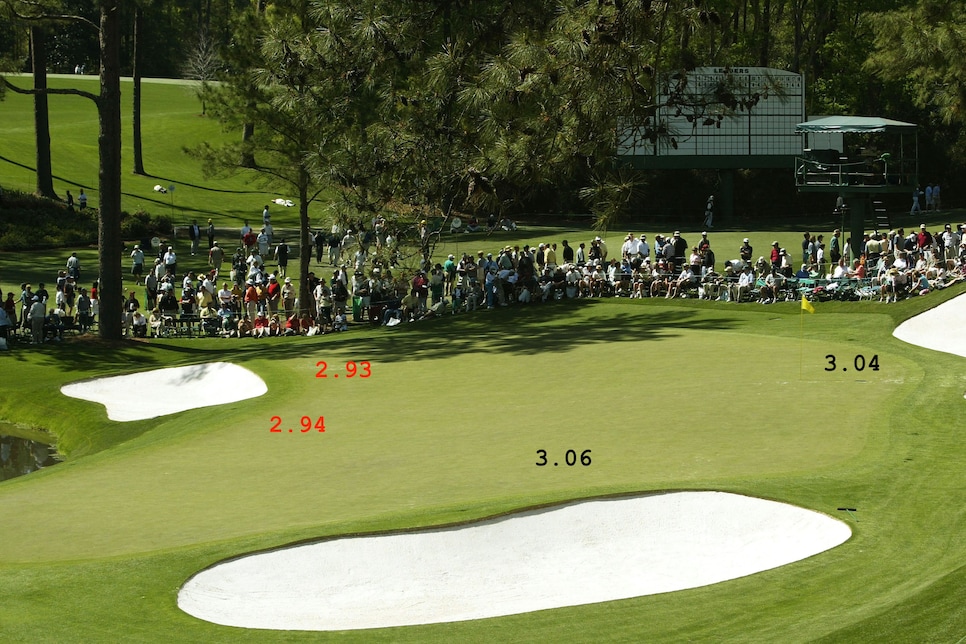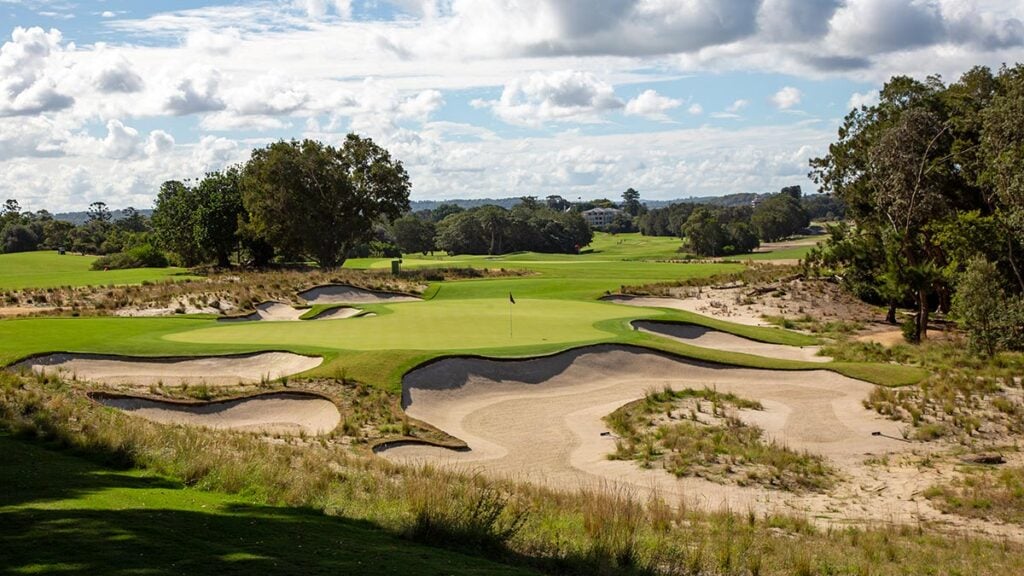Augusta National’s primary defense against the world’s greatest players has always been its greens. That was especially true until 20 years ago. Prior to the club narrowing certain fairways with pine trees (notably seven, 11, 15, 17 and 18) and the addition of the cut of light rough, players could attack the 30- to 80-yard-wide fairways aggressively. There was no option but for the greens to be formidable.
A greater emphasis on straight driving is now required, but Augusta National is still a hitter’s ballpark and the greens continue to play defense. They do it through speed, but more importantly through hole locations.
Where the club puts the flags on each green impacts the scoring to a greater degree than nearly any other tournament course. This is how, in an age when almost every competitor can drive the ball 325 yards and control spin to increasingly unfathomable degrees, Augusta National remains a formidable and complex tournament site.
Each green, no matter whether its shape is oceanic, stepped or a tilted plane, has at least four hole locations that impact how likely it is for players to make birdie.
Some greens have hole locations that are extremely accessible if approached the correct way, often using slopes to feed the ball—think of the collection bowl in the front right of the seventh green, or how players use the central ridge on the par-5 13th green to steer balls to back right hole locations near the stream. Others, like the wide, shallow greens at the par-4 fourth and par-5 15th, have no easily accessible hole locations and force players to make tough putts for birdie and par.

Holes can be placed in the areas of green where the slope of the putting surface is relatively flat, around 2 percent or less.
A good example of how Augusta National can control scoring through hole placement is the par-3 16th. The shot to the green typically plays 170 yards, give or take 10 yards—it’s a 7-, 8- or 9-iron at most. But the green is set on a right-to-left diagonal against a pond with a spine that runs through its axis, creating distinct high-right and low left sections. This isolates four different hole locations, two up top (near and back) and two down low (usually center and back left).
When cups are cut on the upper level on the right, flanked by two deep bunkers, players must fly shots directly to the hole and hope they don’t roll back to the lower level, as my colleague Luke Kerr-Dineen explains in this video. There’s little room for error—they must stick the shot, like throwing darts.
When holes are on the lower level, there’s more room for error—players don’t need to aim at the flag since the slope will move shots landed in the large middle of the green down toward the flags.
Interestingly, the scoring average to each of the four hole locations since 2018 is remarkably balanced: 3.04 and 3.06 to the two high hole locations, and 2.93 and 2.94 to the two on the lower level.
That, however, doesn’t tell the whole story about scoring. Over the last seven Masters, the upper hole locations have yielded just 131 birdies compared to 256 birdies, along with four aces, when holes are set on the left. That’s almost twice as many birdies when pins are set on the low plateau.

The scoring average for the four hole locations on the 16th green don’t tell the whole story.
Harry How
During the same time period, a near equal number of bogeys have been recorded on each tier, 148 on the upper to 141 on the lower. But the lower tier, given its proximity to the water, has extricated 29 double bogeys or worse, while only 15 such scores have been made on the upper level.
In other words, Augusta National can make the 16th a hole where par is a good score by placing the hole on the high right side, or it can turn it into a birdie hole when it sets pins on the left, in particular the traditional back left Sunday hole location. But left pins also court disaster to a degree right-side pins don’t.
The 16th is just one example of how hole location can determine birdies and pars, and therefore outcomes. Almost every green has a similar spectrum of hole locations. Through small adjustments, the 16th can be either the fourth consecutive birdie hole on the second nine (a stretch that includes two par 5s and a 14th hole that’s a likely birdie if the hole is placed on the right side of the green), or play defense as the first of a demanding three-hole finish. That’s the genius of the greens at Augusta National.
More Masters preview stories  Golf Digest Logo Masters 2025: The creation stories of Augusta National’s bunkers
Golf Digest Logo Masters 2025: The creation stories of Augusta National’s bunkers  The Hole At . . . How Augusta National quietly transformed its iconic 13th hole
The Hole At . . . How Augusta National quietly transformed its iconic 13th hole  Game Plan The strategy pros use to play Augusta National’s ingenious greens
Game Plan The strategy pros use to play Augusta National’s ingenious greens
This article was originally published on golfdigest.com




